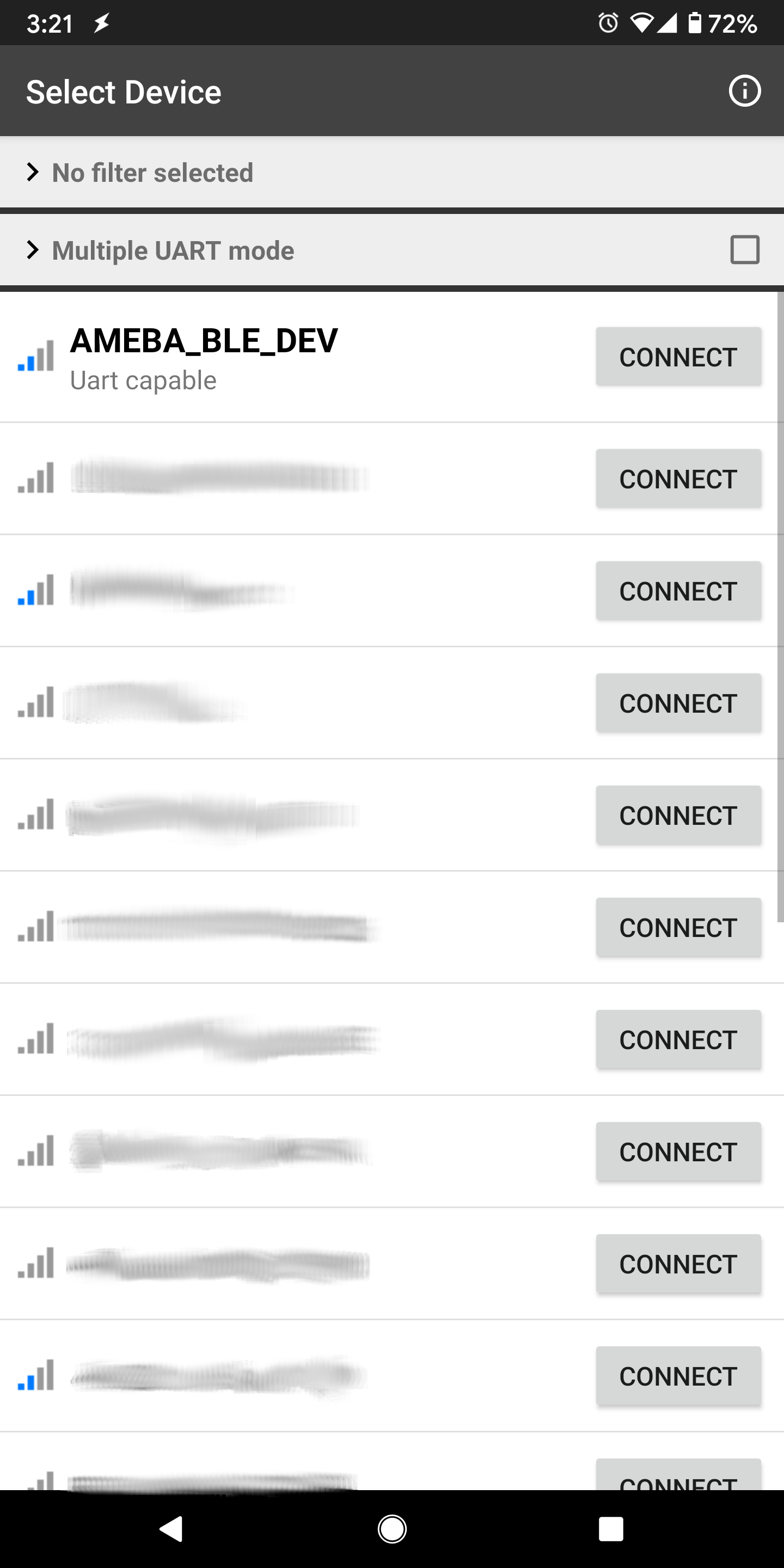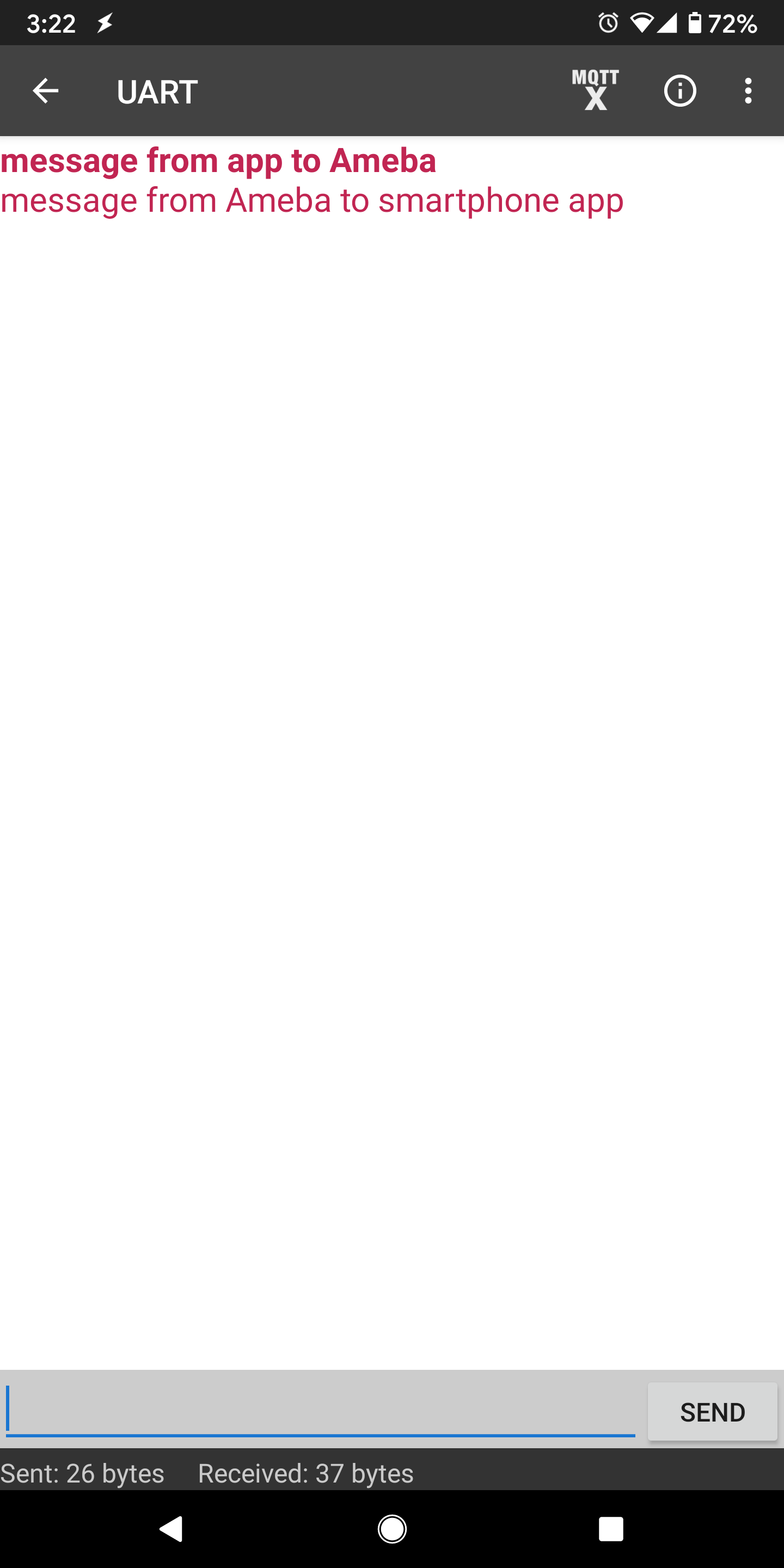BLE UART Service
Materials
AMB82-mini x 1
Android / iOS smartphone
Example
Introduction
With BLE, application data is sent and received using the GATT system. GATT uses services, characteristics, and attributes to organise data and control how the data can be read from and written to. The Bluetooth SIG specification for BLE includes several predefined services for common applications, but users are free to implement custom services and characteristics to best fit their data structure and application needs
In this example, the BLEService and BLECharacteristic classes are used to implement a custom service for transmitting ASCII characters similar to regular UART. This custom service is the Nordic UART Service, which is supported in several smartphone apps.
Procedure
Ensure that a compatible BLE UART app is installed on your smartphone, it is available at:
https://play.google.com/store/apps/details?id=de.kai_morich.serial_bluetooth_terminal
Apple App Store: https://apps.apple.com/us/app/bluefruit-connect/id830125974
Open the example, “Files” -> “Examples” -> “AmebaBLE” -> “BLEUartService”.
Upload the code and press the reset button on Ameba once the upload is finished.
Open the app on your smartphone, scan and connect to the Ameba board shown as “AMEBA_BLE_DEV” and choose the UART function in the app. Note that the BLE UART service on the Ameba board will only work with the UART and Plotter functions in the Bluefruit Connect app, other functions (Pin I/O, Image Transfer) require other BLE services that are not included in this example.
In the UART terminal section of the app, enter a message and click send. You should see the message appear in the Arduino serial monitor.
In the Arduino serial monitor, enter a message and click send. The message will appear in the smartphone app.
Code Reference
The BLECharacteristic class is used to create two characteristics, one
for receive (Rx) and one for transmit (Tx), and added to a service
created with the BLEService class.
The required read/write/notify properties are set for each
characteristic using the set__Property() methods, and callback
functions are registered using the set__Callback() methods. The
required buffer size is also set for each characteristic so that it has
enough memory to store a complete string.
When data is written to the receive characteristic, the registered callback function is called, which prints out the received data as a string to the serial monitor.
When data is received on the serial port, it is copied into the transmit
characteristic buffer, and the notify() method is used to inform the
connected device of the new data.




